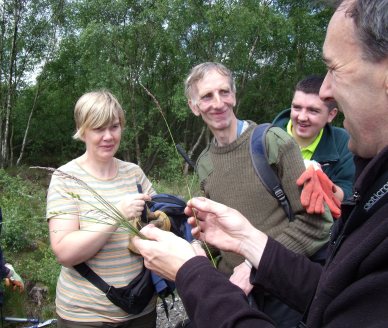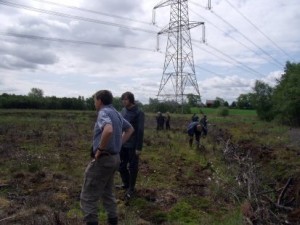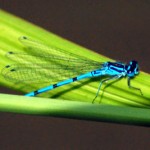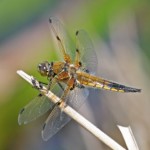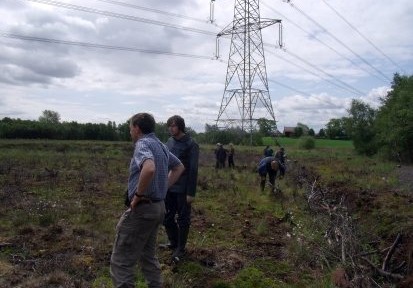
If you live in the Glasgow area, a visit to this hidden gem on the edge of Easterhouse is highly recommended!
Commonhead Moss is the largest area of degraded raised bog remaining in Glasgow, covering 18 hectares. Although raised peat bogs were once common, many were exploited by removing peat for fuel, or drained for agricultural use, which makes the peat dry out. Bogs like this are called degraded bogs. Work is ongoing to “re-wet” Commonhead Moss by blocking drainage channels to allow the bog to become wet & boggy again.
Why is it important to maintain nice soggy peat bogs, you might ask? Well, apart from providing wetland habitat for wildlife, they act as a natural carbon storage system. When peat bogs dry out, they release huge amounts of carbon dioxide into the atmosphere, contributing to climate change.
On Thursday the Midweek group were helping keep the bog soggy by removing birch saplings – trees suck up water, and contribute to the bog drying out.
It was a real pleasure to be on the Moss on a beautiful sunny June day with lots of wildlife to be seen – without even having to look too hard, we saw roe deer, willow warblers, a pair of buzzards soaring above, carnivorous Sundew plants, several kinds of fungi, Four-Spotted Chaser dragonflies and the fantastically vivid, electric blue Common Blue Damselfly. Our dragonflies and damselflies were obviously feeling the joys of spring and were busy making sure there’ll be more dragons and damsels next year!
Although we didn’t see them, there are also Water voles, otters, hares, great crested newts, reed buntings and the rare Green Hairstreak butterfly in the area.
